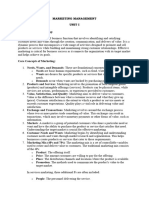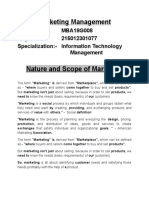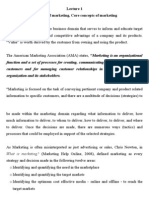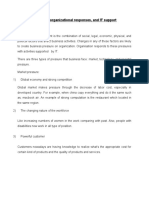0% found this document useful (0 votes)
23 views12 pagesMarketing Assignment
Marketing is the process of creating and delivering value to customers through understanding their needs and wants, and it encompasses activities like market research, product development, and customer service. It differs from selling in that marketing focuses on long-term relationships and customer satisfaction, while selling is more about immediate transactions. The marketing environment, influenced by internal and external factors such as economic conditions and technology, plays a crucial role in shaping business strategies and operations.
Uploaded by
deviltanwani001Copyright
© © All Rights Reserved
We take content rights seriously. If you suspect this is your content, claim it here.
Available Formats
Download as PDF, TXT or read online on Scribd
0% found this document useful (0 votes)
23 views12 pagesMarketing Assignment
Marketing is the process of creating and delivering value to customers through understanding their needs and wants, and it encompasses activities like market research, product development, and customer service. It differs from selling in that marketing focuses on long-term relationships and customer satisfaction, while selling is more about immediate transactions. The marketing environment, influenced by internal and external factors such as economic conditions and technology, plays a crucial role in shaping business strategies and operations.
Uploaded by
deviltanwani001Copyright
© © All Rights Reserved
We take content rights seriously. If you suspect this is your content, claim it here.
Available Formats
Download as PDF, TXT or read online on Scribd
/ 12





























































































